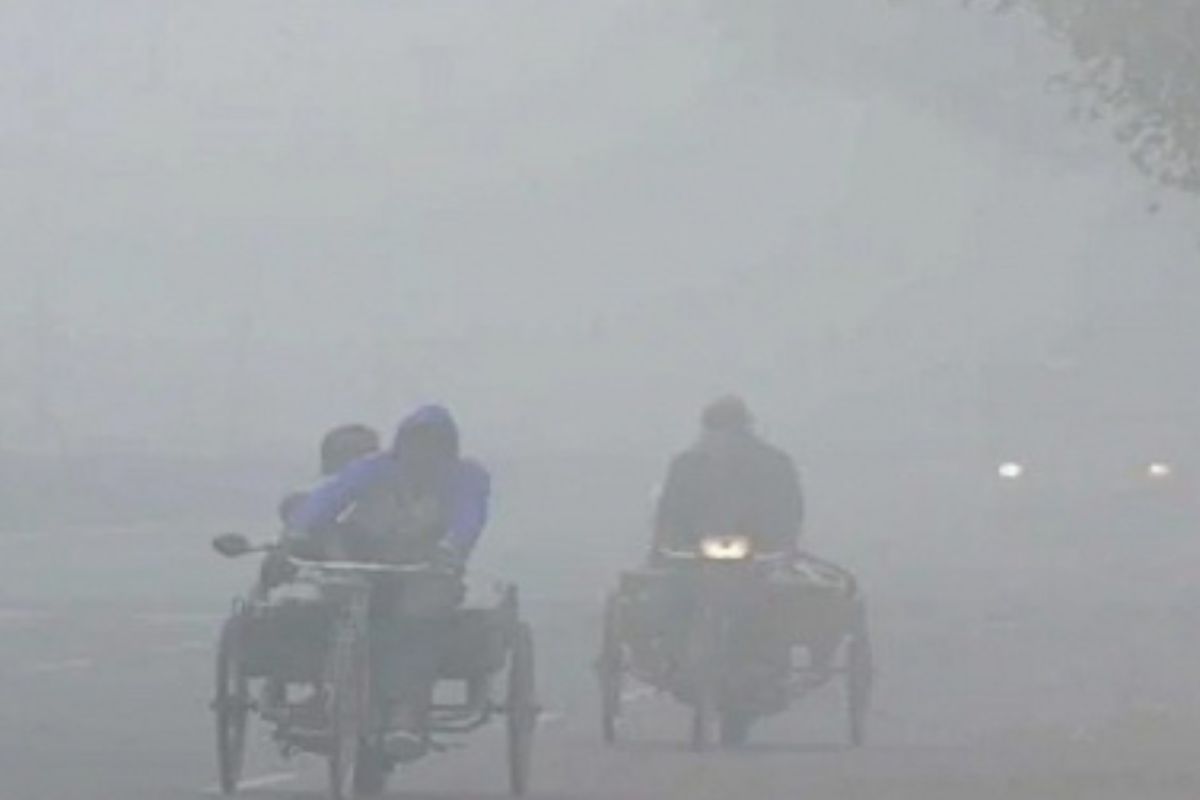Already reeling under a cold wave since the beginning of the new year, the national capital on Tuesday witnessed a cold wave and a thick layer of fog, with Safdarjung recording 7.8 Degrees minimum temperature at around 5:30 am.
According to the Metrological department, the visibility in Palam was recorded at 0 meters at 4.30 AM whereas now it records at 50 meters, whereas, the visibility at Safdarjung is now 200 Meters. As forecasted, dense to very dense fog was observed over parts of Punjab, Northwest Rajasthan, Jammu division, Haryana, Chandigarh and Delhi, Uttar Pradesh, Bihar and Tripura.
Advertisement
“Dense/Very Dense Fog layer (in white patch) extends from Punjab to Bihar across Haryana, Delhi and Uttar Pradesh at 0530 hours IST on 10.01.2023,” Tweeted India Meteorological Department.
Advertisement
“Visibility (in meter) recorded at 0530 hours IST of 10.01.2023: Bhatinda and Agra – 0 each. Jammu division, Ganganagar, Chandigarh, Ambala, Patiala, Bareilly, Lucknow, Sultanpur, Gorakhpur and Bhagalpur – 25 each. Hissar, Delhi-Palam, Baharaich, Gaya, Purnea and Kailashahar – 50,” Tweeted IMD.
Some flights (Delhi-Kathmandu, Delhi-Jaipur, Delhi-Shimla, Delhi-Dehradun, Delhi-Chandigarh-Kullu) are delayed due to fog and cold in the national capital.
“I am going to Gorakhpur. My train is running late by 4-4.5 hours due to fog,” says a passenger.
36 trains are running late in the Northern Railway region due to fog.
Delhi continues to reel under worsening air pollution as AQI plunges into ‘Severe’ category with an overall AQI of 418.
Delhi government yesterday imposed a temporary ban on plying of BS-III petrol and BS-IV diesel four-wheelers in the national capital till January 12.
The Air Quality Index from 0 to 100 is considered as good, while from 100 to 200 it is moderate, from 200 to 300 it is poor, and from 300 to 400 it is said to be very poor and from 400 to 500 or above it is considered as severe.
According to the System of Air Quality and Weather Forecasting and Research (SAFAR), Delhi’s air quality was also recorded to be in the upper end of the ‘very poor’ category on Sunday.
Advertisement











